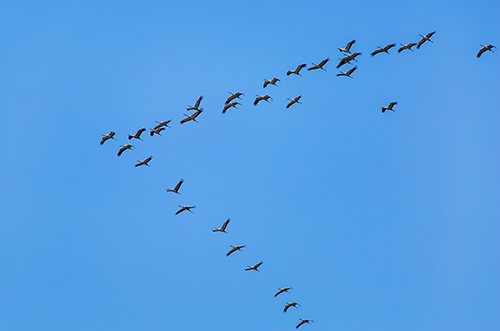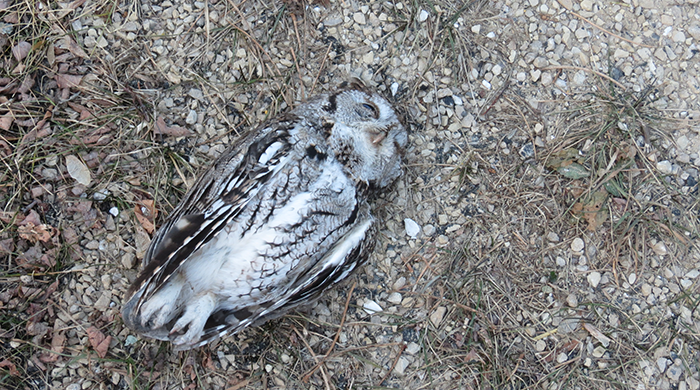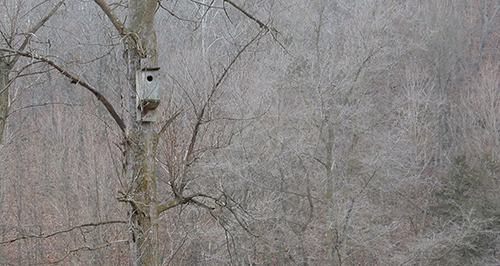
Swansong In An Owly Winter

Up until now, the weather has been very pleasant and I was able to get lots of things done outside in preparation for the winter crunch. Truth is, I can’t complain about how December has been, and I haven’t had to down-shift my internal gears until now. The nighttime temperatures have been dipping into the single digits and the ground is now officially frozen. It’s not easy for me to get used to a slower pace and to spending a whole lot more time inside; I am trying to find my comfort zone. It always takes me a while to realize that it’s okay to slow down and stop thinking about things I could be working on outside.
I’m always glad to see the flocks of migrating tundra swans when they pass over the valley each autumn. The first came at midmorning on the 7th of November. I usually can hear their high-pitched cries from inside the house and I stood in the yard as four flocks of about 100 beautiful snow-white swans passed over my head. They were about a month early, according to my past records.

The next time I heard them coming was on the 28th of November, after a hard freeze. This time, there were 400 or more in each of three different flocks and their swan songs were sweet music to my ears. Sometimes, in years past, they would fly over the house at night and I was always happy just to hear them. With any luck, they will pass over my place again on their return flight in spring.
•••
From her perch in the dark shadows of a cedar tree, a little screech owl’s large yellow eyes scan the surrounding dark landscape. She detects movement in the dry grass not far from the edge of the road. She leans forward and instinctively glides on silent wings, not taking her eyes or ears off the deer mouse in the grass. As she closed the gap between herself and the mouse, the mouse dashed into the road. Surely she would have him before he reached the other side, but her prey seemed to illuminate—his lengthening shadow now followed him as he ran for his life.
The owl was oblivious to the humming tires, and the car was hidden to her behind bright lights. The deer mouse escaped, but the screech owl’s lifeless body remained in on the pavement’s edge.

It had been a very cold night, and the owl’s only thought was of the nourishing warmth the deer mouse would give her. Staying warm in the winter means she must find enough to eat every day. Her need to feed this hunger is always foremost in her drive for survival. During the day, she is tucked safely away in a woodpecker hole in a nearby popple tree. At dusk, she appears in the mouth of the hole, ready to hunt. She silently flies through the woods and disappears into the thick branches of the cedar tree. It had become one of her favorite places to watch a path, trail, and road—a trifecta of cover-reduced prey highways. It’s a hunting tactic owls have evolved. They may not fly as fast or nimbly as hawks and falcons, but powerful stealth satisfies their hunger just as well.
The little gray morph screech owl needed the things that were provided in the next moment of her life, but this next moment she was gone. Her life had been at one with her natural surroundings, and yet her death somehow seems very unnatural.

Still, something positive came from my owl encounter: I was motivated to build a couple of new owl boxes and get them up. It’s been ten years since I’ve heard the evening trills of screech owls. They have been gone from this valley ever since my neighbor logged off the mature oak trees just east of here. I’ve missed them terribly, but glad to know that they could return! Any encouragement I can give them will only bring good natural dividends to my coming days. And nights.
Naturally yours,
Dan
